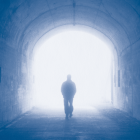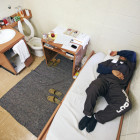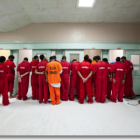
Ohio Legislators Propose Bill Giving Kids the Right to Counsel in Interrogations
|
Earlier this month, in a narrow 4-3 decision, the Ohio state Supreme Court ruled juveniles are not entitled to the many of the same legal protections as adults, including the right to counsel during police interrogations that occur before charges are filed. Now, several state legislators are responding, proposing a law that would overrule the high court’s decision. Ohio state Minority Whip Rep. Tracy Maxwell Heard, a Columbus-area Democrat, began drafting the proposed bill a year before the Oct. 3 Supreme Court ruling, The (Cleveland) Plain Dealer reports. The General Assembly proposal, co-sponsored by Rep. Ross McGregor, a Republican from Springfield, requires juveniles be informed of their right to counsel - either with an attorney or a parent or guardian - prior to police interrogations.








